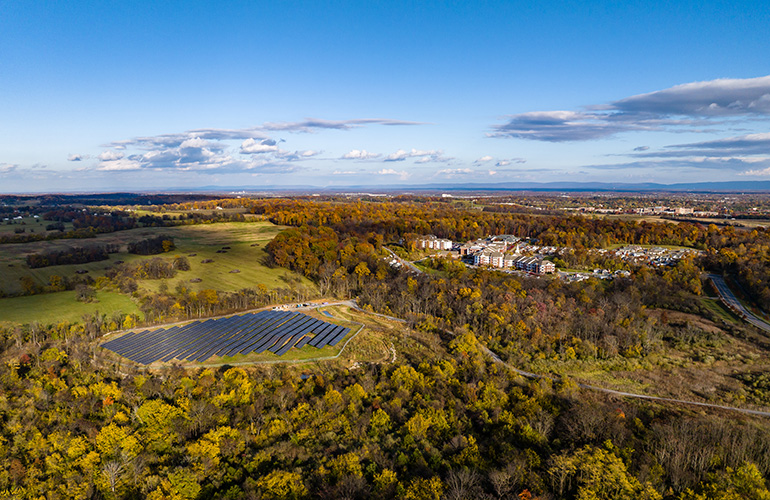FERC clarifies that a solar facility’s final AC output will determine PURPA qualification
The Federal Energy Regulatory Commission (FERC) yesterday reversed a split decision in a September 2020 order that denied Broadview Solar’s application for certification as a qualifying facility (QF) under the Public Utility Regulatory Policies Act (PURPA). The new ruling reinstates FERC’s view that a facility’s power capacity is based on the AC power it can actually deliver to the grid at one time.
 PURPA, which obligates utilities to purchase renewable energy from QFs if the cost of energy meets or is less than fossil fuels, was first implemented in 1978. In general terms, utilities would prefer to build and own solar projects themselves rather than buy solar projects from smaller developers. The long-standing rules said solar projects up to 80 MW could be considered for QF status.
PURPA, which obligates utilities to purchase renewable energy from QFs if the cost of energy meets or is less than fossil fuels, was first implemented in 1978. In general terms, utilities would prefer to build and own solar projects themselves rather than buy solar projects from smaller developers. The long-standing rules said solar projects up to 80 MW could be considered for QF status.
In September 2020, FERC denied QF status to the Broadview Solar project in Montana. The project has a gross capacity of 160 MW, which FERC determined exceeds the 80-MW net capacity limit already set for QFs. The ruling sparked a debate on how to measure power fed to the grid — the Broadview facility doesn’t actually provide more than 80 MWAC to the grid at any one time, even though its rated DC-capacity is much higher. A 50-MW energy storage system uses some of the energy and the project’s 20 inverters do not allow more than 80 MWAC on to the grid.
“Today’s order restores a common-sense understanding that QF status should turn on the power production capacity of a facility as a whole, not the capacity of any individual component part,” FERC Chairman Rich Glick said. “The primary benefit of QF status afforded under PURPA is the right to sell power to a chosen utility, so the amount of power that a QF can actually transmit to the utility should be the touchstone of our analysis.”
In setting aside the prior order, FERC concluded that it erred by departing from PURPA, its own regulations and precedent.
SEIA, which challenged the September 2020 decision, welcomed this new ruling.
“We commend FERC’s decision to reverse the September 2020 Broadview order, which upended the 40-year precedent FERC used to measure capacity for PURPA facilities,” said Gizelle Wray, SEIA director of regulatory affairs. “This is good news for solar + storage facilities across the United States and will ultimately make sure that independent power producers are fairly evaluated when it comes to calculating their capacity and the value they bring to the grid. We are grateful to the Commission for reinstating this policy.”
You may also like:
<!–
–>
Original Source: https://www.solarpowerworldonline.com/2021/03/ferc-clarifies-that-a-solar-facilitys-final-ac-output-will-determine-purpa-qualification/













